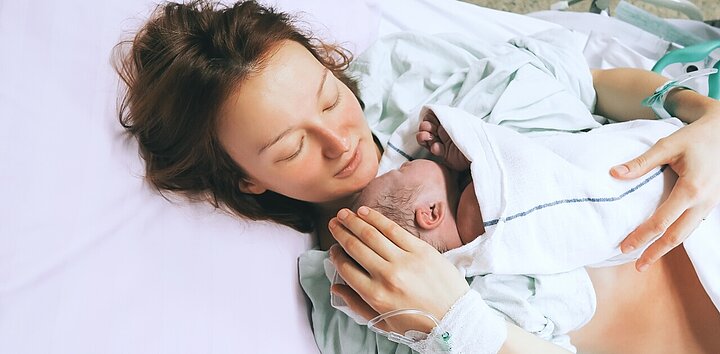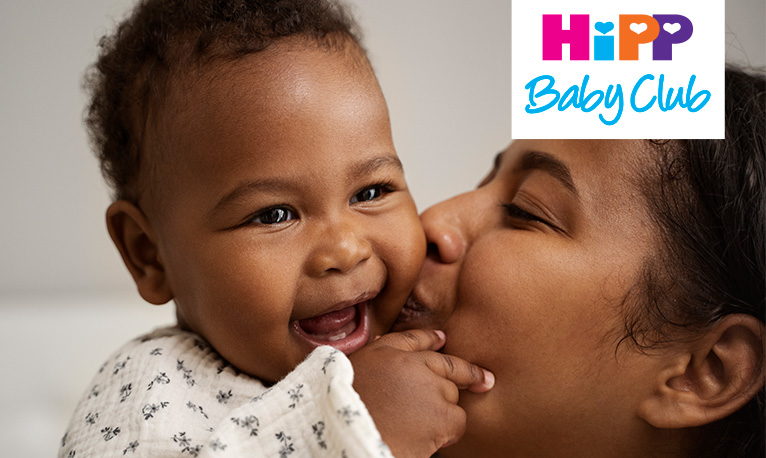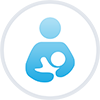What really happens during labour?

Labour is an incredible process of transformation, and your body will go through some natural changes in order to bring your baby into the world. Here's what happens during the three different stages of labour and what you can expect during this time.
The Stages of Labour
Any mum will tell you that having a baby isn't called “labour” for nothing – it's a big job! However, it's a job your body was designed to do, and you'll have plenty of support to help you through. Plus, you've got the best reward ever waiting at the end of it – meeting your baby!
The process has three “stages,” each of which accomplishes a specific job.
First stage
The beginning of labour can feel a bit different for different women. You might experience:
- period-like pains
- backache
- a slightly upset stomach or feeling a bit sick
- feeling a bit 'under the weather’
- a ‘show’ losing your mucous plug
All of this means your body is getting ready for the work ahead!
Your contractions will become stronger and more regular during this first stage; once they are happening every five minutes and last 30-60 seconds, it's time to ring the midwife or maternity ward for advice on when to come in. It's perfectly okay to walk around if you feel like it – in fact, this may help move the labour along.
Once your labour is established, contractions will usually come about three or four times in ten minutes and be strong enough that it's difficult to speak during them. By this point, you'll usually be with your midwife at home/MLU or in hospital.
Sometimes during this stage you may notice that you've passed a bit of mucus, which might be pink or slightly tinted with blood. This is called a “show,” and it's totally normal – though if there is lots of blood, you should ring the hospital or midwife straightaway.
Breaking waters (amniotic fluid)
At some point during your labour, the membrane containing your “waters” - the amniotic fluid surrounding your baby in the womb - will break (or in some cases, the midwife may break it for you should you consent to that). Some women experience a trickle, and others a gush.
If your waters break before your labour starts, (or if you think they may have), make a note of the time and contact your maternity unit. You can wear a sanitary pad (not a tampon) to keep things dry.
Second stage
This is the big moment! The second stage of labour begins when your cervix (the entrance of the uterus) is fully open, and ends with the birth of your baby. Your midwife may check and tell you that you're “at 10 centimetres,” and you'll probably feel an overwhelming need to push if you don’t have an epidural. In many cases if you’re having a physiological birth your midwife will not need to do an examination to check your cervix and will be able to monitor from external signs and can be guided by you.
If this is your first baby, this stage could take over an hour, but mums having their second or third babies often find it goes more quickly. You may want to consider you positioning here as laying on your back isn’t the best position to push your baby out. Side laying, on all fours or leaning over the bed if you have an epidural can be great positions.
Unless you’re using hypnobirthing. once your baby's head is visible, your midwife might ask you to stop pushing and pant instead. This helps to slow things down and avoid a tear. When this happens, you'll know you're nearly there – your baby should appear with the next contraction or two!
When your little one is born, the midwife will place your baby onto your chest for the magical skin to skin contact and then cut the cord once its stopped pulsating and delivering oxygen, stem cell rich blood to your baby. Some babies might need a bit of oxygen or some help to clear out the nose and mouth, but the midwife will bring your baby to you as soon as possible for that all-important first cuddle.
Third stage
It may come as a surprise that there is a third stage of labour, especially once you’ve given birth to your baby. In fact, this stage, when you give birth to the placenta, usually it doesn't require much effort from you - but it's very important for your postnatal health.
You can choose to have an injection to help this stage go more quickly, or you can let things proceed naturally, which may take up to an hour. If you opt for the injection is given just after birth and helps the uterus to contract, gently pushing out the placenta. The injection can make you feel sick or vomit, some mums prefer to wait and see rather than have the medication. The actual delivery of the placenta does not hurt.
Finally, the midwife will check that your uterus is well contracted by placing her hand on your abdomen near your belly button. This is very important, because a poorly contracted uterus can cause excessive bleeding. She will then check the placenta and membranes to make sure they are all complete, because if any parts remain in the uterus, they could cause infection or bleeding.
You might experience some further pains (similar to contractions) for a while after birth. These are called 'after pains,' and they mean that your uterus is contracting back to its pre-pregnancy size. The more babies you have the more uncomfortable this may be. You may also feel these pains more strongly during breastfeeding; this is because breastfeeding makes your body release oxytocin, the same hormone that made your uterus contract during labour.
If you have any questions about labour please speak to your midwife, who will be happy to help you.


